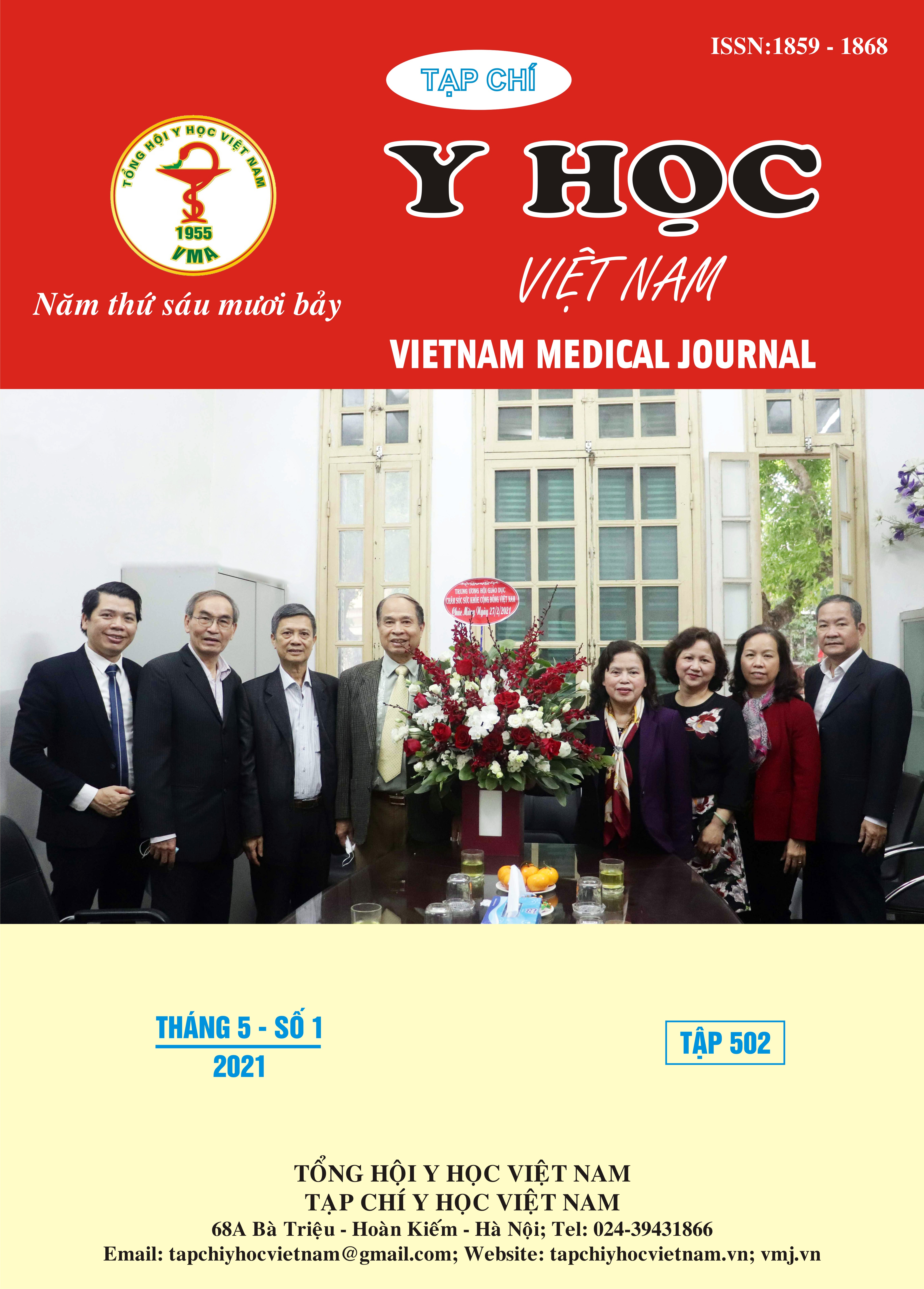THE EPIDEMIOLOGICAL CHARACTERISTICS OF TRAUMATIC BRAIN INJURY PATIENTS TREATED AT VIET DUC HOSPITAL
Main Article Content
Abstract
Objectives: Describe some epidemiological characteristics of traumatic brain injury (TBI) patients treated at Viet Duc University Hospital. Subjects and methods: A prospective study was conducted on 1002 patients with traumatic brain injury at Viet Duc University Hospital from 01/03/2020 to 31/08/2020. Results: We have selected a total of 1002 patients eligible for the study, including 787 (78.5%) male patients and 215 (21.5%) female patients. The average age is 38.66+19.30 years old. Traffic accident (69.96%), domestic accident (18.96%), work accident (13.1%) of the patient. More than 90% of traumatic brain injury patients due to traffic accidents are related to motorcycles. Vehicle used by patients: 79.32% of motorbike riders, 9.43% pedestrians and 5.28% cyclists, while electric motorcycles/electric bicycles are 3.85% of patients. There are 34.38% of traffic accident patients using alcohol, 44.78% of patients use a helmet. From 20-40 years old, accounting for 42.23% of the total number of TBI patients and 58.92% of patients using alcohol. The TBI level distribution is based on the Glasgow scale, the TBI mild of 59.58%, the TBI moderate of 18.66% and the TBI severe of 21.76%. 36.9% of patients received surgical treatment. The proportion of patients surviving hospital discharge was 86.3% of patients. The mortality rate increased in the group> 60 years old, the group of medium to severe TBI and the group who did not use a helmet when riding a motorcycle. Conclusion: It is essential to enforce compulsory helmet wearing laws and decree 100 on the prevention of alcohol in traffic as well as a fall prevention program for the elderly to prevent TBI.
Article Details
Keywords
Traumatic brain injury, Epidemiology, Viet Duc University Hospital
References
2. Gao G, Wu X, Feng J, et al. Clinical characteristics and outcomes in patients with traumatic brain injury in China: a prospective, multicentre, longitudinal, observational study. The Lancet Neurology. 2020;19(8):670-677.
3. Olesen J, Gustavsson A, Svensson M, et al. The economic cost of brain disorders in Europe. European journal of neurology : the official journal of the European Federation of Neurological Societies. 2012;19:155-162.
4. Wu X, Hu J, Zhuo L, et al. Epidemiology of traumatic brain injury in eastern China, 2004: a prospective large case study. Journal of Trauma and Acute Care Surgery. 2008;64(5):1313-1319.
5. Seesen M, Siviroj P, Sapbamrer R, Morarit S. High blood alcohol concentration associated with traumatic brain injury among traffic injury patients during New Year festivals in Thailand. Traffic injury prevention. 2019;20(2):115-121.
6. Hsu I-L, Li C-Y, Chu D-C, Chien L-C. An Epidemiological Analysis of Head Injuries in Taiwan. International Journal of Environmental Research and Public Health. 2018;15(11):2457.
7. Pozzato I, Tate RL, Rosenkoetter U, Cameron ID. Epidemiology of hospitalised traumatic brain injury in the state of New South Wales, Australia: a population-based study. Australian and New Zealand journal of public health. 2019;43(4):382-388.
8. Hotz GA, Cohn SM, Popkin C, et al. The impact of a repealed motorcycle helmet law in Miami-Dade County. Journal of Trauma and Acute Care Surgery. 2002;52(3):469-474.


